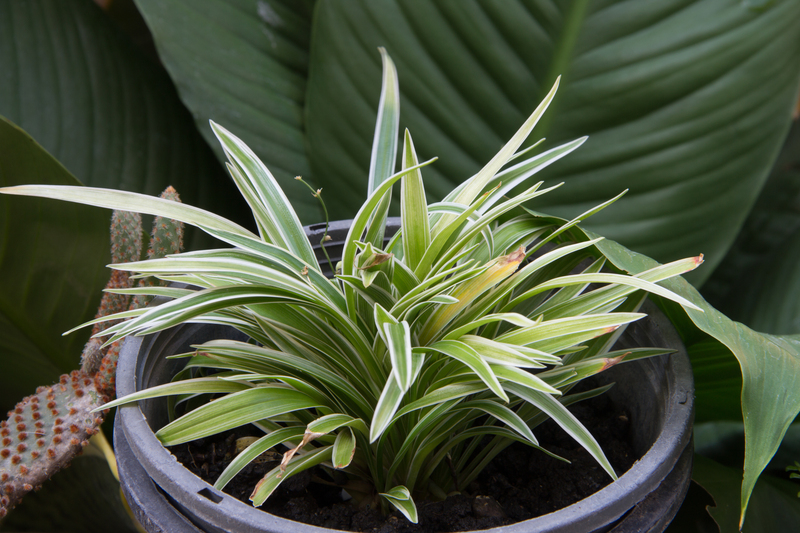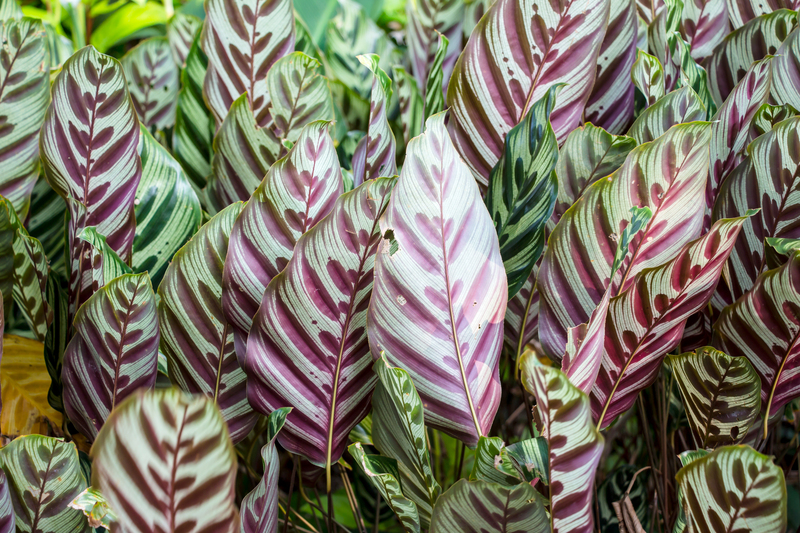Ensuring Orchids Flourish: A Comprehensive Care Guide
Posted on 04/09/2025
Ensuring Orchids Flourish: A Comprehensive Care Guide
Orchids have captivated plant lovers for centuries with their exotic beauty, unique blooms, and surprisingly diverse varieties. While their reputation for being finicky may deter some, the reality is that ensuring orchids flourish at home is entirely achievable with the right knowledge. This comprehensive orchid care guide unveils practical tips and expert insights to help you nurture thriving, blooming orchids year-round.
Understanding Orchids: A Brief Overview
Belonging to the family Orchidaceae, orchids are one of the largest families of flowering plants on Earth. With over 25,000 naturally occurring species and countless hybrids, their array of shapes, sizes, and colors is astonishing. The most popular varieties for home growers include Phalaenopsis (moth orchid), Cattleya, Dendrobium, and Oncidium.
Despite their diverse backgrounds, most orchids share similar fundamental requirements. By mimicking their natural environments, you can guarantee your orchids will flourish indoors. Let's break down each care aspect for optimum results.

Choosing the Right Orchid
Before diving into orchid care, it's important to select a species suited to your growing conditions and experience level:
- Phalaenopsis (Moth Orchids): Known for their resilience and frequent blooms, perfect for beginners.
- Cattleya: Famous for large, fragrant blooms but needs ample light.
- Dendrobium: Versatile and hardy, requiring moderate care.
- Oncidium (Dancing Lady): Enjoys bright conditions and regular watering.
- Paphiopedilum (Slipper Orchids): Thrive in lower light and cooler temperatures.
Understanding each orchid's needs lets you tailor your care and truly help your orchids prosper.
Essential Elements for Orchid Success
1. Light: The Lifeblood of Orchid Growth
Orchids require the right balance of light to flourish and rebloom. Most popular types, like moth orchids, do best in bright, indirect light. Too much sun scorches leaves, while insufficient light stunts growth and prevents flowering.
- Ideal Placement: East or west-facing windows are best, with filtered light.
- Light Indicators: Healthy leaves should be bright green--not dark green (too little light) or yellowish (too much light).
- Artificial Lighting: If natural light is insufficient, use grow lights set for 12-16 hours daily.
2. Watering: The Art of Proper Hydration
Watering is one aspect where many orchid enthusiasts falter. Thanks to their epiphytic roots, most orchids prefer to dry out between waterings. Overwatering is the primary reason orchids decline.
- General Rule: Water once every 7 to 10 days, adjusting for season and humidity.
- Method: Use room-temperature water, pouring thoroughly until it drains out. Do not let pots sit in water.
- Visual Cues: Silvery roots mean they need water; green roots are well-hydrated.
- Special Tip: Water in the morning to allow foliage to dry by night, thus preventing disease.
3. Potting Media and Repotting
Unlike standard houseplants, orchids need special potting mediums--not soil!
- Preferred Media: Bark, sphagnum moss, coconut husk chips, or specialized orchid mixes.
- Why Not Soil? Soil suffocates orchid roots and leads to rot.
- Repotting Schedule: Repot every 1-2 years or when media breaks down. Repot post-bloom for less stress.
- Pot Selection: Clear pots allow root observation and ensure adequate drainage. Terracotta is also suitable.
4. Fertilization: Feeding for Flourishing Orchids
Nutrient needs in orchids are modest but regular feeding promotes exuberant blooms.
- Type: Use balanced, water-soluble fertilizers (20-20-20 or specified "orchid food").
- Frequency: Every 2-4 weeks during active growth; reduce in winter.
- Dilution: Always dilute fertilizer to half recommended strength to prevent root burn.
- Flush: Rinse media with water once a month to prevent salt buildup.
5. Temperature and Humidity: Orchids and their Atmosphere
Orchids generally enjoy warm, stable temperatures and moderate to high humidity:
- Optimal Temperatures: Day: 65-80?F (18-27?C); Night: 55-65?F (13-18?C).
- Humidity: 40-70% is ideal. Bathrooms or kitchens often provide perfect environments.
- Humidity Hacks: Use a humidity tray with water and pebbles beneath the pot, or run a small humidifier nearby.
- Air Circulation: Gentle air movement prevents fungal issues--an oscillating fan works wonders.
Common Challenges and How to Overcome Them
Yellowing Leaves
This may indicate excessive watering, poor lighting, or nutrient deficiencies. Assess and adjust care accordingly. Remove affected leaves with sterilized scissors.
Root Rot
Frequently caused by soggy substrates or poor drainage. Repot in fresh orchid bark, trim black/brown roots, and improve watering habits.
Failure to Flower
Insufficient light, short day-length, or lack of seasonal temperature drop are common culprits. Supplement light and replicate seasonal changes to encourage reblooming.
Advanced Orchid Care Tips: Taking Your Skills to the Next Level
- Encourage Reblooming: Some orchids, like Phalaenopsis, can bloom multiple times from the same spike. After flower drop, trim stem just above a node (joint) to foster new buds.
- Cleanliness: Disinfect tools before trimming or repotting to avoid the spread of pests and diseases.
- Acclimatization: New orchids should be quarantined for up to 3 weeks before joining your collection to prevent introducing pests.
- Pest Management: Monitor for mealybugs, aphids, or scale insects. Treat early with insecticidal soap or neem oil.
- Seasonal Adjustments: Reduce water and fertilizer in winter; orchids rest during this time.
Myths About Orchid Care Debunked
- Myth 1: Orchids are delicate and hard to grow. In truth, many orchids are quite resilient when their core needs are met.
- Myth 2: Orchids need to be watered with ice cubes. This might shock roots; use room-temperature water instead.
- Myth 3: Orchids must be potted in soil. Regular potting soil can smother roots and lead to demise.
Repotting Orchids: A Step-by-Step Guide
Repotting allows orchids to continue flourishing by providing fresh media and space for new roots.
- Prepare the pot and medium: Select a slightly larger pot and soak new bark/moss beforehand.
- Remove the orchid: Gently loosen the plant and shake off old mix.
- Prune roots: Trim away mushy, black, or shriveled roots with sterile scissors.
- Position and fill: Place the orchid in the new pot and fill in around roots with fresh media, anchoring the plant.
- Water lightly: Moisten media and keep in indirect light for several days.

Frequently Asked Questions (FAQ) on Flourishing Orchids
How do I know if my orchid is healthy?
Healthy orchids display firm, green leaves, plump roots, and regular, vibrant blooms. Leaf spots, wilting, or mushy roots suggest issues needing prompt attention.
Can I use tap water for my orchid?
Most orchids tolerate tap water, but if your water is very hard or soft, consider using filtered or distilled water to prevent mineral build-up.
How often do orchids flower?
Popular species like Phalaenopsis can flower once or twice a year, each bloom lasting several weeks to months. Proper care encourages more frequent flowering cycles.
Do orchids need special pots?
Yes, orchid pots with drainage holes (and ventilation) are crucial for root health. Transparent pots are excellent for monitoring root vigor and moisture.
Conclusion: The Joy of Flourishing Orchids
Orchid care doesn't have to be mysterious or intimidating. By understanding the unique needs of these remarkable plants--particularly their lighting, watering, feeding, and environmental needs--you can ensure your orchids flourish, yielding breathtaking blooms and thriving greenery for years to come.
With vigilance and a little patience, your orchid collection can become a source of pride, beauty, and tranquility in your home. Begin your journey with these orchid tips, and watch as your plants grow stronger, healthier, and more abundant with every season.
Start applying these essential orchid care guidelines today--because flourishing orchids are within your reach!

